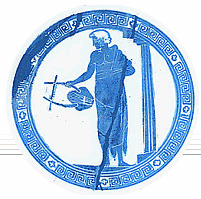|
for
MUSIC APPRECIATION
Practice Test No. 2, answers
THE MIDDLE AGES AND THE RENAISSANCE Back to Practice Test No. 2
True or False Questions:
1.
True
2.
True
3.
False, it was vocal
4.
False it is
monophonic
5.
False, Gregorian
chant has a narrow range and is in conjunct motion.
6.
True
7.
True
8.
False, texture in
Renaissance music was primarily polyphonic (i.e. Mass and Madrigal).
9.
False, instrumental
music was performed outside the church or after a religious service.
10. True
11. False, the 1400’s was the beginning of the
Renaissance and there was an increase in secular music
12. True
13. False, the text of a madrigal is
non-religious and the texture is polyphonic.
14. True
15. False, the Renaissance mass is a five
movement work, Kyrie, Gloria, Credo, Sanctus and Agnes Dei.
16. True
17. False, Organum was built around Gregorian
chant but also had an added embellished part.
18. Organum
19.
Estampies
20.
c
21.
Pope Gregory
22.
Gregorian chant
23.
b
24.
a
25.
troubadours
26.
the High Middle Ages or the Ars Nova
27.
lute
28.
imitative polyphony
29.
a cappella
30.
word painting
31.
Martin Luther
32.
the madrigal
33.
b
34.
isorhythm
35.
b
36.
d
37.
d
38.
a
39.
c
40.
b
41.
a
42.
b
Back to Practice Test No. 2
| 


